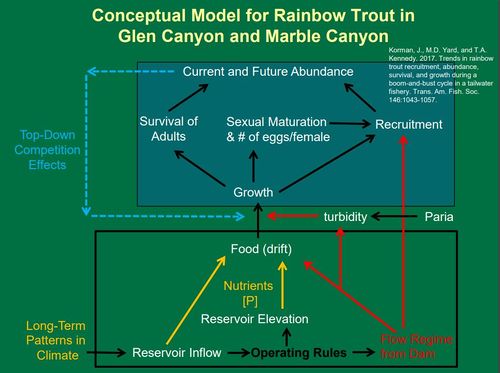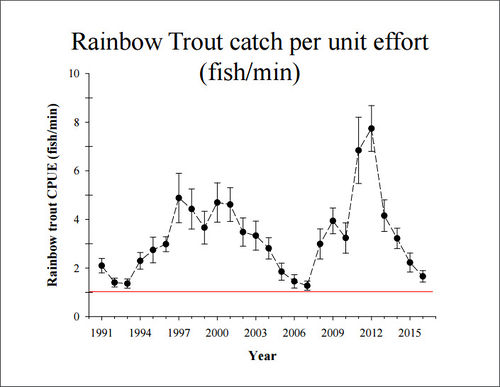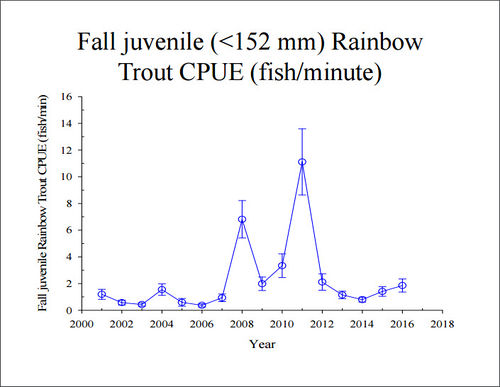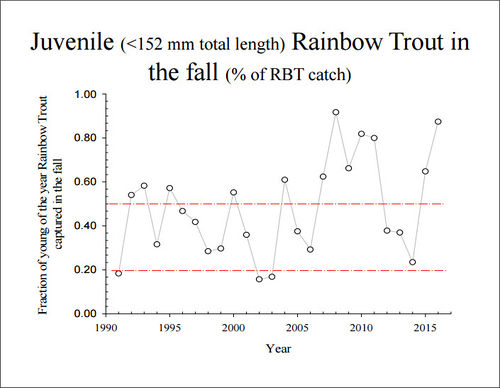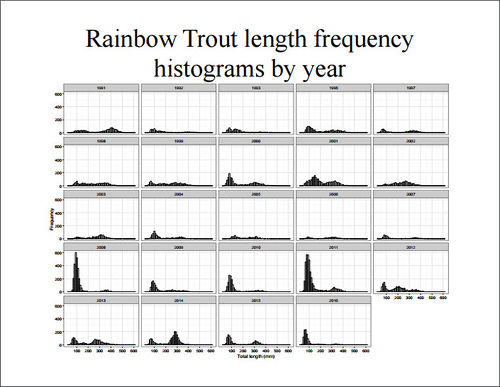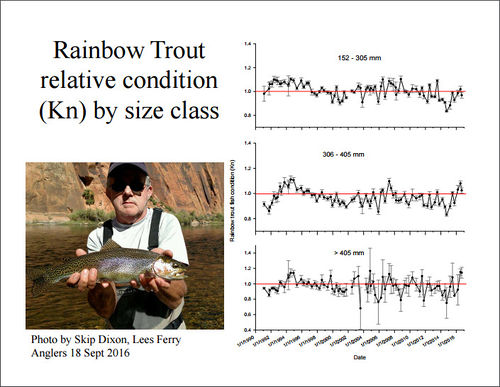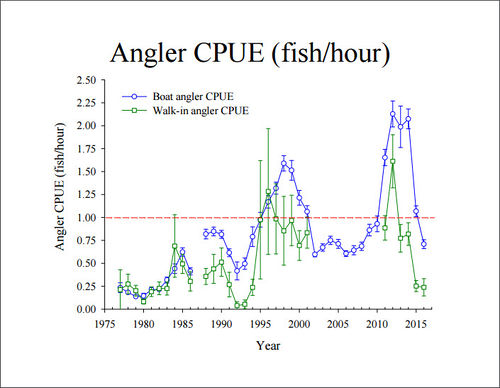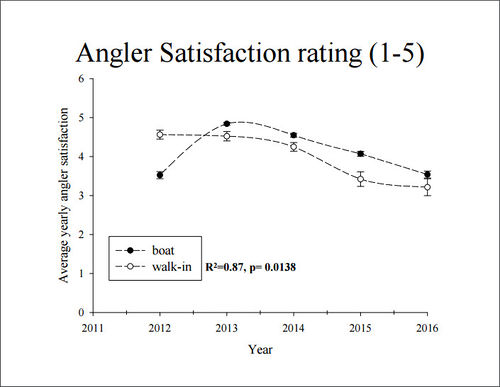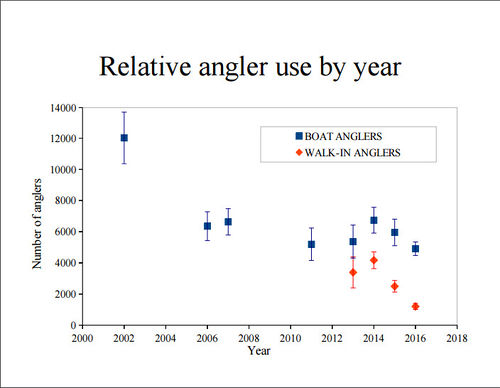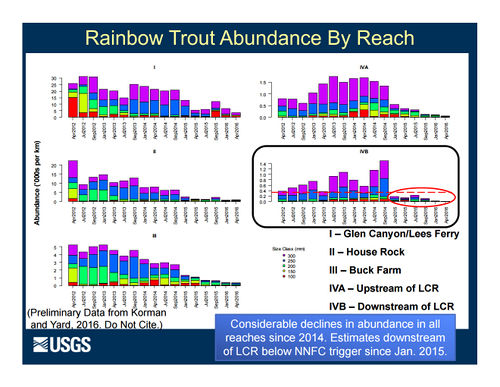Difference between revisions of "FISHERY"
Cellsworth (Talk | contribs) |
Cellsworth (Talk | contribs) |
||
| Line 138: | Line 138: | ||
'''2023''' | '''2023''' | ||
| + | *[https://www.usbr.gov/uc/progact/amp/twg/2023-11-08-twg-meeting/20231108-Effects2023SpringHFEBalancingFlowsRainbowBrownTroutGlenCanyon-508-UCRO.pdf Effects of the 2023 Spring HFE and Balancing Flows on Rainbow and Brown Trout in Glen Canyon] | ||
*[[Media:Korman et al 2022.pdf| Korman et al. 2023. Drought-related changes in water quality surpass effects of experimental flows on trout growth downstream of Lake Powell reservoir. Can. J. Fish. Aquat. Sci]] | *[[Media:Korman et al 2022.pdf| Korman et al. 2023. Drought-related changes in water quality surpass effects of experimental flows on trout growth downstream of Lake Powell reservoir. Can. J. Fish. Aquat. Sci]] | ||
*[https://doi.org/10.1002/tafs.10381 Yard et al., 2023, Declines in prey production during the collapse of a tailwater rainbow trout population are associated with changing reservoir conditions: Transactions of the American Fisheries Society] | *[https://doi.org/10.1002/tafs.10381 Yard et al., 2023, Declines in prey production during the collapse of a tailwater rainbow trout population are associated with changing reservoir conditions: Transactions of the American Fisheries Society] | ||
Revision as of 16:31, 18 January 2024
|
|
The Lees Ferry Rainbow Trout FisheryIn 1964, the Lees Ferry tailrace on the Colorado River was given birth by the completion of Glen Canyon Dam, which impounded Lake Powell. Subsequent water releases from the bottom of Lake Powell changed the once highly turbid, warm waters of the Colorado River into a constant cold (46-50°F), clear flowing river. Shortly after completion of the dam, the Arizona Game and Fish Department stocked rainbow trout (Oncorhynchus mykiss) in the 15-mile Lees Ferry reach and, in 1981, began to manage this section of river as a Blue Ribbon rainbow trout fishery. The trout began to flourish in the Lees Ferry reach from 1970-1985 when catches of rainbow trout above 10-pounds were not uncommon, and angler pressure was relatively low. In 1991, however, the Bureau of Reclamation implemented the Record of Decision flow regime, which consisted of higher minimum and more stable flows and allowed for increased trout reproduction and survival. Under these conditions, a huge population of trout developed causing individual fish growth rates to decline. Quite simply, there was a large number of fish competing for limited space and food items, resulting in a fishery where trout less than 14-in were dominant. In 2000, the Arizona Game and Fish Department began a long-term monitoring program sponsored by Grand Canyon Monitoring and Research Center to determine the effects of Glen Canyon Dam operation on the trout fishery at Lees Ferry and to make recommendations for improving this fishery. Since 2000, our data collection has shown an increase in the general health of all trout age classes (especially since 2002). This increase in fish health is usually associated with an increase in growth rates. There has been a marked increase in catch rates of young-of-the-year fish in recent years. With successful spawning and recruitment continuing to occur, fishing conditions in Lees Ferry are improving. [1] LTEMP Resource Goal for the Rainbow Trout FisheryAchieve a healthy high-quality recreational rainbow trout fishery in GCNRA and reduce or eliminate downstream trout migration consistent with NPS fish management and ESA compliance. Desired Future Condition for the Lees Ferry Trout FisheryA high quality trout fishery in GCNRA, as further described in the Recreation DFC that does not adversely affect the native aquatic community in GCNP. |
| Rainbow Trout | Brown Trout |
|---|
